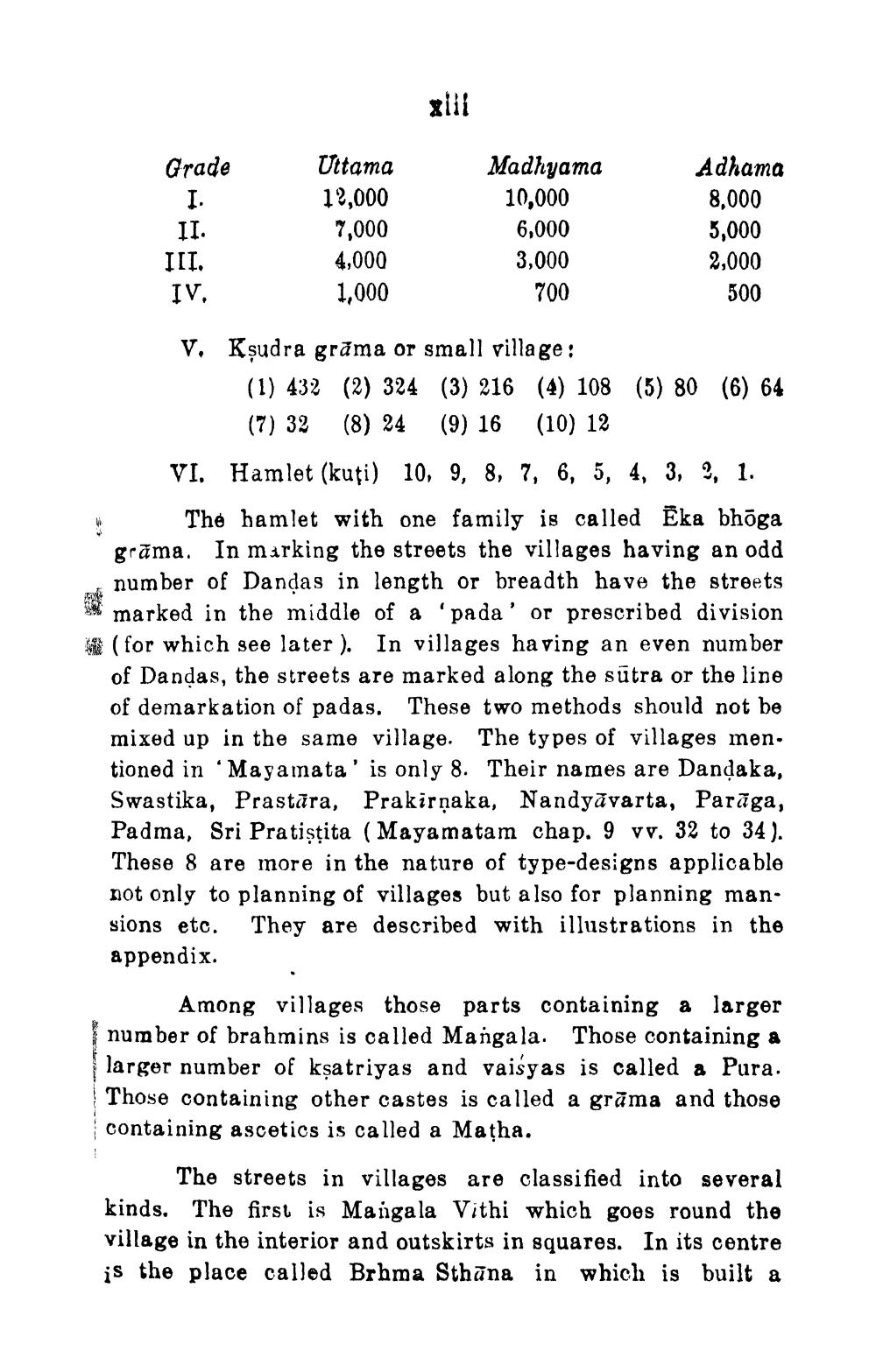________________
xili
Grade
Uttama 12,000 7,000 4,000
II. III. IV.
Madhyama 10,000 6,000 3,000
700
Adhama 8,000 3,000 2,000 500
1,000
V. Kșudra grăma or small village:
(1) 432 (2) 324 (3) 216 (4) 108 (5) 80 (6) 64
(7) 32 (8) 24 (9) 16 (10) 12 VI. Hamlet (kuți) 10, 9, 8, 7, 6, 5, 4, 3, 2, 1.
The hamlet with one family is called Eka bhāga grāma. In marking the streets the villages having an odd number of Dandas in length or breadth have the streets marked in the middle of a 'pada' or prescribed division @ (for which see later). In villages having an even number
of Dandas, the streets are marked along the sūtra or the line of demarkation of padas. These two methods should not be mixed up in the same village. The types of villages men. tioned in ‘Mayamata' is only 8. Their names are Dandaka, Swastika, Prastāra, Prakirņaka, Nandyāvarta, Parāga, Padma, Sri Pratiștita (Mayamatam chap. 9 vv. 32 to 34). These 8 are more in the nature of type-designs applicable not only to planning of villages but also for planning man. sions etc. They are described with illustrations in the appendix.
Among villages those parts containing a larger number of brahmins is called Mangala. Those containing a larger number of ksatriyas and vaisyas is called a Pura. Those containing other castes is called a grāma and those containing ascetics is called a Matha.
The streets in villages are classified into several kinds. The first is Mangala Vithi which goes round the village in the interior and outskirts in squares. In its centre is the place called Brhma Sthāna in which is built a




